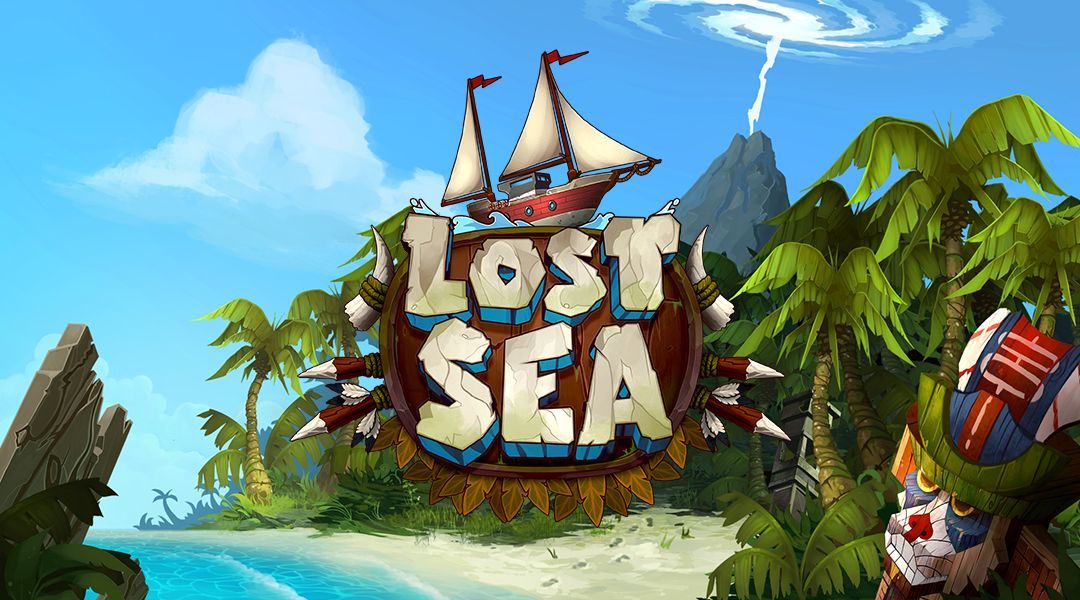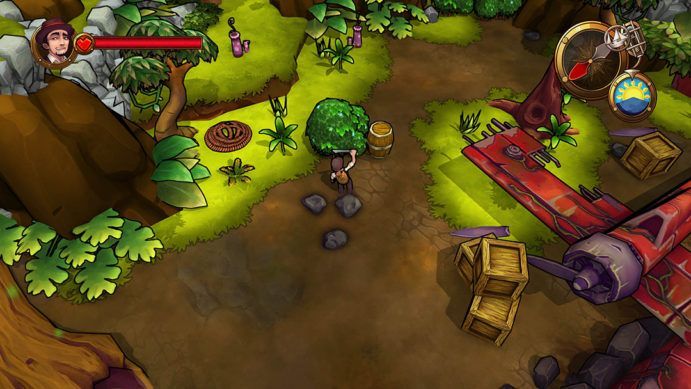
Lost Sea Review
By Rob Gordon 26 July 2016
Although Lost Sea provides fun, laid-back gameplay alongside a colourful, cel-shaded world, a lack of depth and some restrictive design choices may limit the scope of the game.
In spite of its status as a location of perceived mysterious activity, the Bermuda Triangle is a place that has been underused by video game developers. The region has long been thought of as a hotspot for disappearances, and this reputation has barely decreased in spite of scepticism. Nonetheless, video games have steered far clear of the Triangle.
Thankfully, developer eastasiasoft is on hand to take players into the Bermuda Triangle through Lost Sea. The title is an action-adventure game that throws the user into the area, washing up ashore after a shipwreck. The player must then traverse a collection of procedurally generated islands, and escape from the inscrutable region altogether.
However, this is easier said than done, as the player has to find stone tablets in an archipelago of islands in order to progress. Not only that, but a selection of puzzles and varied enemies await would-be escapees as they try to make their way out of the region. These remote islands offer slightly more dangers than coconuts and barbecues on the beach – much like Far Cry 3, the beauty of the world masks some rather nasty surprises.

That said, it won’t take long for players to grasp a good understanding of how Lost Sea works. At its core, the title is very simplistic, particularly when it comes to gameplay, with the challenge perhaps instead coming from permadeath. However, this is not necessarily a bad thing, and the basic combat and movement mechanics mean that the player never feels like things are getting too complicated.
Instead, Lost Sea players will incrementally gain new knowledge of exactly how the game is run. To start with, the user will simply be able to move around and use a single attack to take down the enemies that are scattered across the islands. Eventually, additional moves can be gained, but again it’s hardly a complex title.

Rather than the player character being responsible for completing all tasks, instead a number of crew members can be picked up along the way. These additional NPCs are able to use specific skills in order to help the player progress across islands. It’s a neat touch, and one that makes the character feel like something bigger than just a sole survivor jumping from island to island. On the downside, follower AI sometimes leaves a lot to be desired.
These different followers somewhat make up for the game’s shortcomings in character choice. Although the player is given a good selection of avatars at the beginning of the game (albeit with an odd lack of ethnic diversity), each of the characters plays in the same fashion. Other games that use permadeath in a roguelike fashion, such as Rogue Legacy, offer a little variety of play style through character choice, but in Lost Sea this is curiously absent.
Nonetheless, it won’t be long before players forget about those limitations at the beginning of the game, as the islands themselves will soon become a major preoccupation. These islands act as little pockets of gameplay, akin in a way to those found in The Flame in the Flood, albeit without as tough a focus on survival mechanics. Instead, action is a priority, fighting against some nasty-looking creatures to ensure that escape is still on the cards.

Lost Sea does suffer from one of the criticisms that often plagues procedurally generated content, however. Although the title promises millions of different islands by way of this variation, it isn’t long before they all begin to feel more than a little similar, in spite of palette swaps. In the end, a little more variety may have been nice.
Nonetheless, with Borderlands-style cel-shaded graphics working very well, there’s little to complain about from a design perspective. The models themselves are all solid, and the colorful design of enemies and the environments is certainly pleasant to look at. When it comes to surface level, Lost Sea has an extremely good level of polish.
Lost Sea’s problems do become apparent when the player digs a little deeper, however, and they end up being what separates the title from top tier permadeath games. There is an unfortunate friction beneath the surface, with the different aspects of the gameplay not working entirely fluidly together. In particular, the combination of roguelike aspects and permadeath with more laissez-faire combat does not quite work.

A lot of this comes down to the game’s pacing. The player’s movements are a little on the languid side, and although this is not necessarily a bad thing, it does mean that users are more likely to spend their time exploring their surroundings and taking a laid-back approach to exiting the islands. When the player first boots up the game, there is nothing to make them move at a fast pace – survival mechanics as found in Don’t Starve aren’t there, and neither is there a finite time restriction for each level as per Crypt of the Necrodancer.
Instead, Lost Sea’s placid nature feels more akin to Crashlands, where the player can quite happily take their time over tasks. Unfortunately, the use of permadeath – and the fact that when the player quits, all progress is lost – means that when the player does in fact end the game, be it through death or through simply having to go and do something else, it can lead to a bit of a frustrating experience.
Quite simply, play sessions feel a little too long to really make best use of roguelike mechanics. Roguelike games are often at their strongest when players are given a choice on when they want to quit, be it after a quick five-minute session or a longer playthrough, and this flexibility is not quite available in Lost Sea. Anyone who has had to call a Diablo 3 play session short and then booted up the game to find themselves at the beginning of a dungeon will know this frustration well.

In the end, the game feels a little bit restrictive in a number of ways. Forcing the layer to restart for failed or aborted sessions is certainly one of the worst examples of this, although this has apparently being patched on the PC release of the game. On the PS4 version, however, this still seems to be a factor. The player may be able to get to the next batch of levels after beating a boss, and then be able to automatically begin at the next lot of themed islands, but this is still a little frustrating.
As well as this, Lost Sea does not quite manage to find any kind of sweet spot in terms of average play time. The restrictions on making it to the end of a set of islands means that short bursts of play aren’t useful for anyone other than those not interested in progression, but equally the title does not quite feel rewarding enough for longer sessions.
In the end, some kind of multiplayer aspect could have negated these criticisms, at least in some way. A local co-op mode would have gone down a treat, as seen in HellDivers, with the simplistic controls helping to avoid the clutter sometimes found in co-op gaming. Equally, allowing a second player to control one of the followers would have been a neat touch, akin to the multiplayer modes of the LEGO games.
Nonetheless, Lost Sea is still a fun game to pick up and play. It may not achieve the same level of status as some of the other games in its market, but its generally relaxing gameplay and eye-catching visuals will certainly find some love. Unfortunately, a lack of cohesive play means that it is unable to make that next step into indie classic territory.
Trailer
Lost Sea is out now for PC, Xbox One, and PS4. Game Rant was provided a PS4 code for this review.
